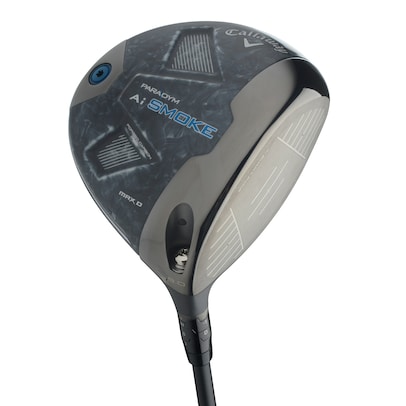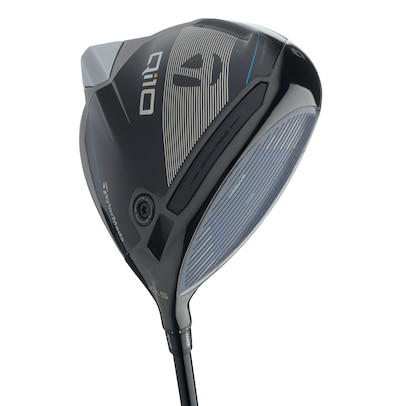Hot List
The highest launching drivers for every swing speed
There is a fundamental problem with average golfers and their drivers: They hit the ball too low. That could be for a lot of reasons, chief among them, of course, is that they haven’t been fit for their current driver, which leads to a launch angle that’s too low. (Launch angle is the degree the ball launches above the horizontal plane of the ball before it’s hit.)
A recent Golf Digest test of average golfers showed more than a third had launch angles of less than 11 degrees. For golfers with swing speeds of less than 120 miles per hour (that would be about 25 miles per hour faster than the average golfer’s swing speed), a launch angle of more than 11 degrees is generally going to help optimize total distance. The reason your driver might not be launching the ball high enough could be tied to a lot of things, including your swing, whether you play the ball forward enough in your stance and even how high you tee the ball. The simplest reason could be that you might not have a driver that helps you hit the ball higher. And that could be because you don’t play a driver with enough loft. But it also could be because you don’t have a driver that fundamentally is designed to launch the ball higher.
In our player testing for the 2024 Golf Digest Hot List, we asked each player to rate every driver based on its ball flight on a scale from low to high. While each player was dialed into their specs by leading fitters from Golf Galaxy, players came away from each driver test with firm thoughts about which drivers tended to launch the ball lower or higher. In many cases, that was the result of the fitting where a particular model might lead the fitter to adjust the loft a little lower from its standard loft to produce an optimized ball flight.
But if you’re an average golfer looking for a little more height on your tee shots—in other words, like the vast majority of golfers—or if you’re that rare golfer who hits it too high, here are the drivers our players found to be the highest launching models naturally. Our lists are broken down by the three swing speed groups from our testing: Low (<95 mph), Medium (>95 and <105 mph) and High (>105 mph).
Low Swing Speed

The largest chunk of the golfing population should fit into this model. It has the most stable head in the family for extra forgiveness on mis-hits across the face, and Callaway has added a rear perimeter sliding weight to more tightly fine-tune mis-hits and swing patterns. Expect a mid-range ball flight compared to the other models in this family, and the ideal target player is a swing speed from 90 to 100 miles per hour.

Instead of trying to be multiple things at the same time, this ultra-oversized entry in the ST driver family focuses almost exclusively on forgiveness. Rather than selectively saving weight in a relatively contained head size, this head stretches to the size limits of the rules, replacing titanium with lightweight carbon composite on the crown and sole. Mizuno designers then jammed as much leftover mass as deep in the head as possible. The goal is extreme stability, and this head features the highest moment-of-inertia measurement (for its resistance to twisting on off-center hits) of any Mizuno driver ever.

Somewhat the fraternal twin of the ST-Z 230, the ST-X 230 shifts the weight saved from its carbon-composite crown and sole slightly toward the heel. While for some, that 14-gram back weight offers a bit of slice correction, its main function is to make the overall head easier to manipulate during the swing. That means it can appeal to players looking to work the ball. Still, its relatively deep position in the head improves overall stability on off-center hits. Just as important to ball speed are the high-strength titanium alloy in the face and a channel cut in the sole to improve the way the face deflects, particularly on lower impacts.

A larger looking profile with more of a flattened crown sets the tone for the most forgiving of the three models in this family. It should produce the highest launch of the three with a natural-draw weighting that works gently to mitigate your slice. This also makes it ideal for most average golfers who are looking for the best performance on off-center hits. The adjustable rear-sole weight lets your clubfitter dial in your ideal swing weight, especially helpful for those who want to play this driver at a slightly shorter length than the standard 45¼ inches.

A lighter weight overall, including a lighter head, shaft and even grip, makes Air-X a speed-enhancing alternative for moderate to slow-swinging golfers with a smooth tempo. The design also helps average golfers avoid the slice through extensive heel-side internal weighting that’s deep in the perimeter to increase launch. Furthermore, the face angle is closed, and an offset option provides more draw effect than past versions. As one final distance bonus, the face features the same thinner, 15-point variable-thickness design found on the company’s flagship drivers.
Medium Swing Speed

With the most expansive clubhead in the family and featuring the largest face area, this model is intended to help inconsistent ball-strikers. The head has a built-in anti-slice bias (Callaway estimates 10 more yards of draw compared to last year’s Paradym X), and the fixed rear weight is lower than past models for extra stability and the highest launch in the family. The golfer with a swing speed from 80 to 95 miles per hour and a swing path that features a steeper downswing that cuts across the ball will benefit the most from this model.

The slice-fighting version incorporates all the ball speed enhancements of the standard model, especially its off-center-hit stability through its large front-to-back size and its expansive face area. Another benefit carried over from the standard model is an eight-gram weight in the butt end of the grip. This helps to counterbalance the club’s weight, making it easier to control the downswing and build more speed. The heel-biased shaping and internal weighting on the heel side help counteract a slice.

Distance and direction are the distinguishing characteristics of this design in the Darkspeed family. The Max is made for players looking to make the most of their poorer strikes and limit how wild their slice might be. Through larger regions of carbon composite than before in the crown and sole, this driver redistributes extra mass to the deep center and the heel side of the sole. Positioning the heavier 12-gram weight in the rear boosts forgiveness, and shifting it to the heel generates more slice correction. In either position, the internal weighting stays low and back for naturally higher launch with a draw bias.

A larger looking profile with more of a flattened crown sets the tone for the most forgiving of the three models in this family. It should produce the highest launch of the three with a natural-draw weighting that works gently to mitigate your slice. This also makes it ideal for most average golfers who are looking for the best performance on off-center hits. The adjustable rear-sole weight lets your clubfitter dial in your ideal swing weight, especially helpful for those who want to play this driver at a slightly shorter length than the standard 45¼ inches.

The objective of this all-titanium model is forgiveness. The key is a 16-gram weight that sits deep in the rear perimeter. It stabilizes the head so that it loses less energy on off-center hits. Its depth also produces a higher trajectory to help average golfers get more carry distance. That weight’s position also slightly favors the heel side, which will make it easier to square the face at impact and add draw spin to counter a slice.
High Swing Speed

The largest chunk of the golfing population should fit into this model. It has the most stable head in the family for extra forgiveness on mis-hits across the face, and Callaway has added a rear perimeter sliding weight to more tightly fine-tune mis-hits and swing patterns. Expect a mid-range ball flight compared to the other models in this family, and the ideal target player is a swing speed from 90 to 100 miles per hour.

Among the improvements here—beyond better overall stability on mis-hits on the heel and toe and high and low—is the increased use of carbon composite in the crown. Now stretching almost seamlessly to the top of the face, the crown saves weight to help increase stability on off-center hits and to lower the center of gravity for reduced spin and better energy transfer. The structure of the channel in the sole now gives more at impact to deliver extra flex to the face for faster ball speed, particularly on lower hits on the face.

A lighter weight overall, including a lighter head, shaft and even grip, makes Air-X a speed-enhancing alternative for moderate to slow-swinging golfers with a smooth tempo. The design also helps average golfers avoid the slice through extensive heel-side internal weighting that’s deep in the perimeter to increase launch. Furthermore, the face angle is closed, and an offset option provides more draw effect than past versions. As one final distance bonus, the face features the same thinner, 15-point variable-thickness design found on the company’s flagship drivers.

If you’re going to make a low-spinning head, you must replace as much titanium with lighter carbon composite as you can. That’s why the crown and the toe section of the sole have relatively weightless carbon-composite pieces. Switching from titanium to carbon composite in the body helps to lower the center of gravity thanks to the 12-gram internal weight that rests slightly closer to the face compared to the all-titanium model. That produces the lower-spinning shots favored by elite players and a slightly lower-launching ball flight.

The objective of this all-titanium model is forgiveness. The key is a 16-gram weight that sits deep in the rear perimeter. It stabilizes the head so that it loses less energy on off-center hits. Its depth also produces a higher trajectory to help average golfers get more carry distance. That weight’s position also slightly favors the heel side, which will make it easier to square the face at impact and add draw spin to counter a slice.





